Learn how sanctuary researchers and scientists track animals, such as giant seabass and humpback whales, through acoustics and passive acoustic monitoring to analyze sanctuary conditions and build sanctuary soundscapes.
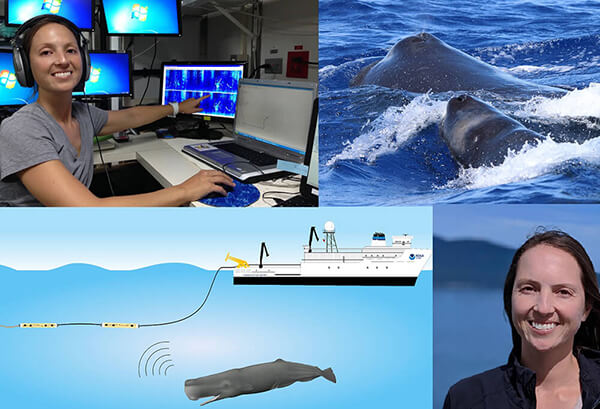
Dr. Yvonne Barkley shares research findings related to tracking whales using passive acoustic monitoring. This talk will discuss a new approach for localizing passive acoustic data of sperm whales collected using towed hydrophone arrays and demonstrate how this information can be incorporated into species distribution models to improve our understanding of sperm whale habitat preferences in Hawaiian waters.
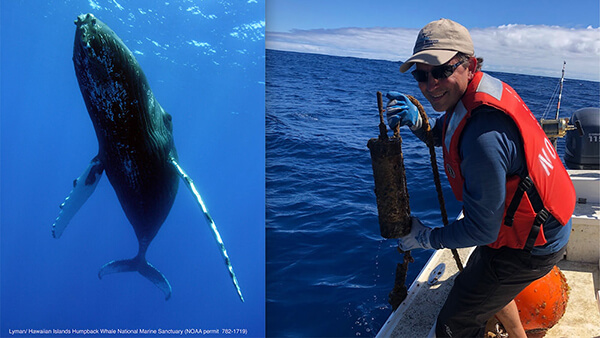
This presentation describes recent fluctuations in the presence of humpback whales in Hawaiʻi over the past several years and the science being conducted to understand these trends. Dr. Marc Lammers discusses the application of novel tools to understand the occurrence of humpback whales in remote habitats, including the use of a Wave Glider and machine learning algorithms to detect the presence of whales in the Papahānaumokuākea Marine National Monument.
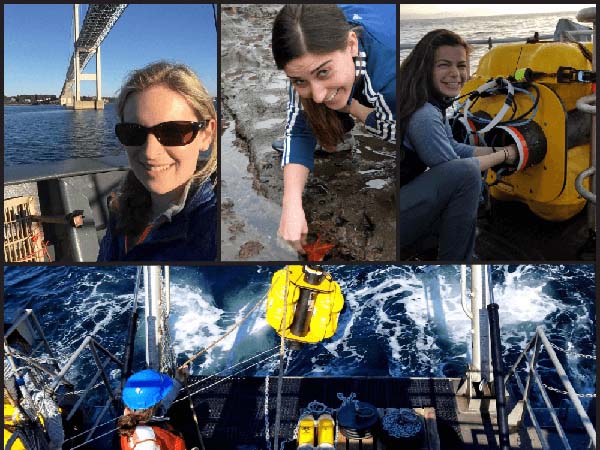
Acoustic signals travel quickly over long distances in the ocean, making sound the principal sense for many marine species, especially acoustically-oriented marine mammals that rely on sound to communicate, perceive their environment, detect and avoid predators, forage for food, and navigate. Passive acoustic monitoring (PAM) is used to measure, monitor, and determine the sound sources in underwater environments, enabling scientists to eavesdrop on the acoustic behavior of marine animals (whale song, fish chorusing), natural abiotic sounds (wind, earthquakes), and human generated sounds (cargo vessels). In this webinar, three Ph.D. candidates that are NOAA Dr. Nancy Foster Scholars will discuss current PAM research efforts taking place in some of California’s national marine sanctuaries.
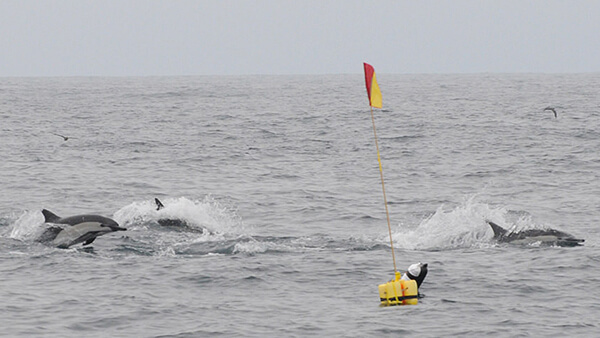
While sanctuaries differ in the migration tendencies of species and seasonal conditions, all sanctuary habitats share one thing: they produce sound. Researchers can rarely visually observe these elements, so they need additional tools to "see" beneath the waves to better understand and protect sanctuaries. Channel Islands National Marine Sanctuary has been a center for passive acoustic monitoring for years, and in this webinar, we'll explore various ways in which the Channel Islands NMS and partners are characterizing the sanctuary soundscape, what we've been able to learn so far, and what we are still seeking to understand.
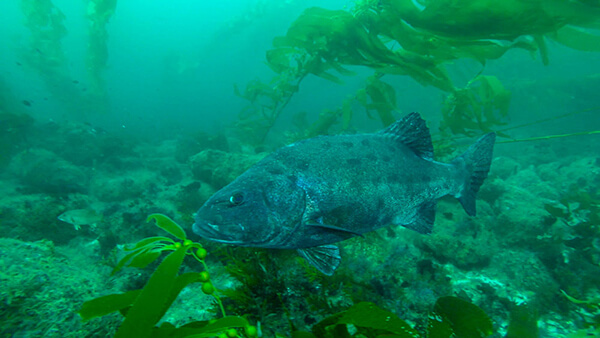
Giant Seabass are a species of large fish that live in the cool waters off the coast of California. This fish is the top predator of the kelp forest ecosystem, but the population has been low because of overfishing. Thanks to government protections in California, giant seabass are beginning to return to Channel Islands National Marine Sanctuary and NOAA is working with other groups to study them. The fish is unique because scientists believe it uses sounds to communicate. NOAA is working to record these sounds in the wild and study how these fish move around Santa Barbara Island, a small offshore island in the sanctuary.